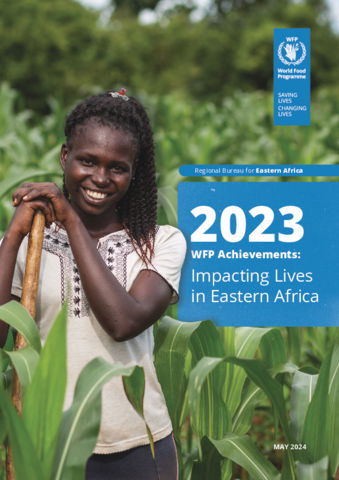
Even though decreased humanitarian funding strained WFP's capacity to deliver vital aid, WFP introduced prioritization measures, still managing to reach nearly 40 million people with food and nutrition assistance.
The Eastern Africa region continued to face increased humanitarian needs in 2023 driven by a combination of interconnected factors such as conflict, climate hazards, and economic shocks. Over five years, the number of food insecure people in the region doubled, reaching 63 million. In 2023, the region witnessed a 44 percent surge in the number of forcibly displaced individuals, reaching a staggering 23 million, up from 16 million in January 2023. The conflict in Sudan contributed significantly to this increase, contributing to what is now recognized as the world’s largest displacement crisis, with over 8.5 million people reportedly displaced.
The increased needs in Eastern Africa, coupled with a decrease in humanitarian funding, put enormous pressure on WFP, affecting its ability to deliver vital assistance at scale to those in need. In response to this funding shortfall, WFP was forced to implement prioritization measures and ration cuts to maximize the utilization of available resources. More than 10 million beneficiaries will miss out on assistance all through 2024 due to prioritisation unless additional funding is received.
World Food Programme (2023). Regional Bureau for Eastern Africa 2023 Achievements: Impacting Lives in Eastern Africa.
Annual Country Reports
Available at: Annual Country Reports 2023 | World Food Programme (wfp.org)



